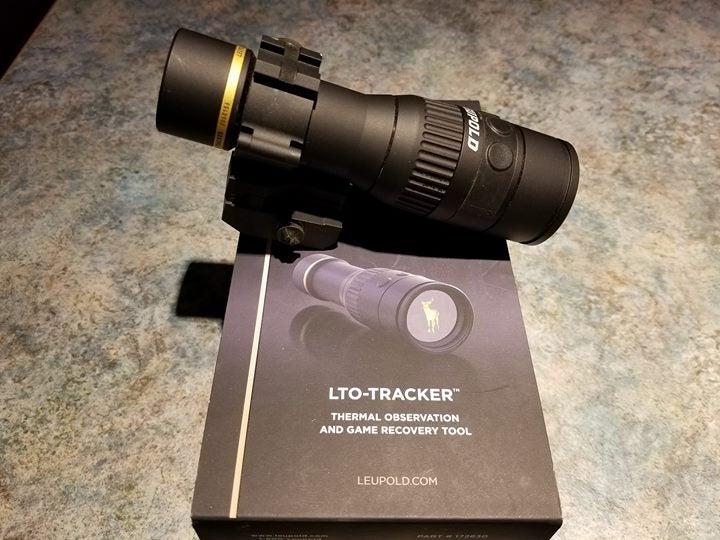Back at SHOT Show 2017 I got a chance to check out the Leupold LTO Thermal Tracker. Click here to check out the article. The LTO is an entry level handheld thermal monocular. On Leupold’s website the LTO is $909 but it retails regularly for $699.99 and can be purchased for close to $600 if you shop around. I picked up this one second hand for close to $500.
Most thermal sights are rather expensive. Flir, ATN, and Armasight thermal sights are easily over $1,000 and many of them are not weapon mountable. Torrey Pines makes a small thermal sight for a lot less but you get what you pay for. I have one and it is not very good. The screen is very small and the resolution is poor. What it makes up for is in size. It is like a small micro red dot compared to the LTO.
Here is the Torrey Pines mounted onto my MP15-22 with an Aimpoint behind it.

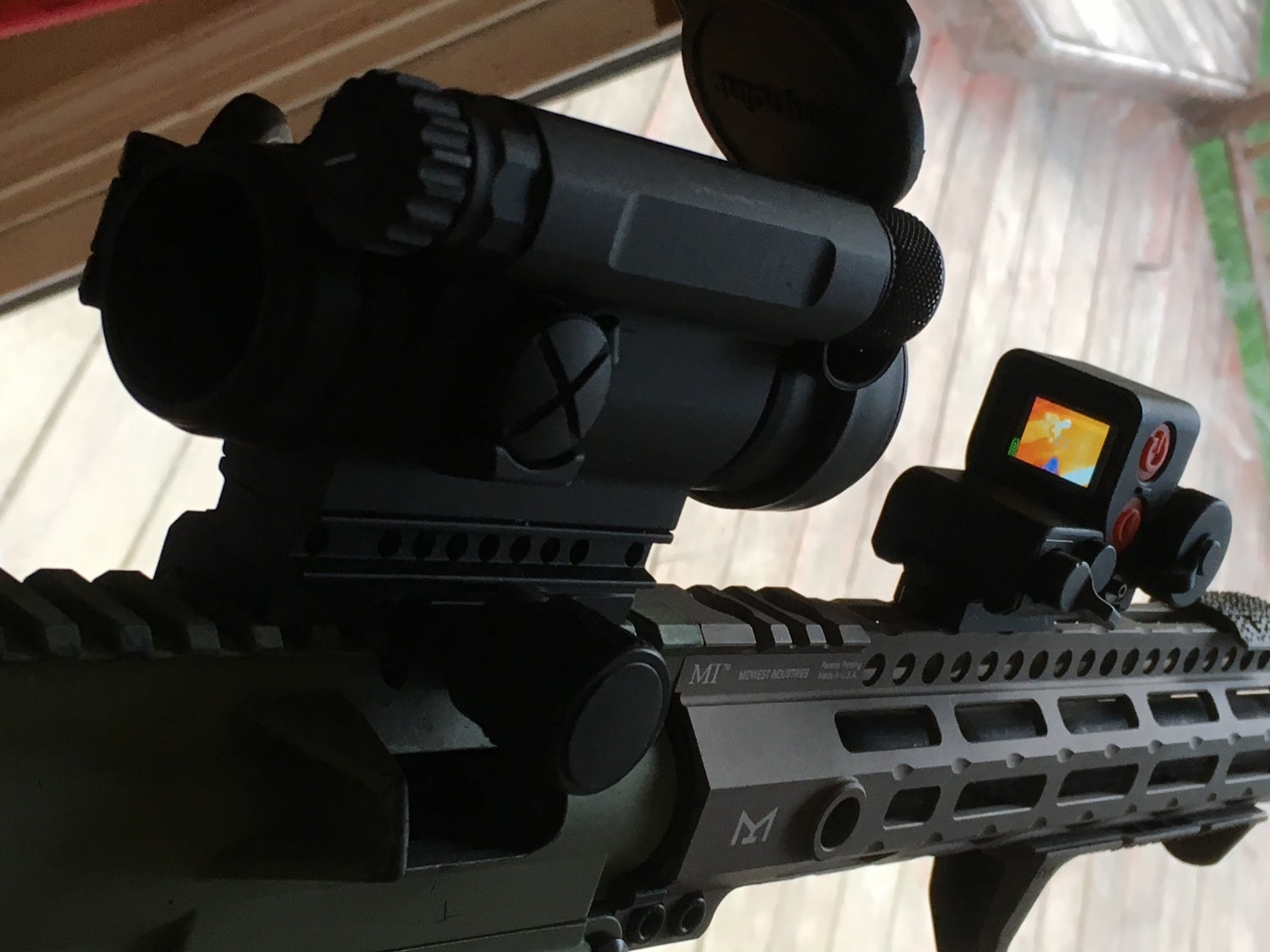
Torrey Pines vs Leupold.

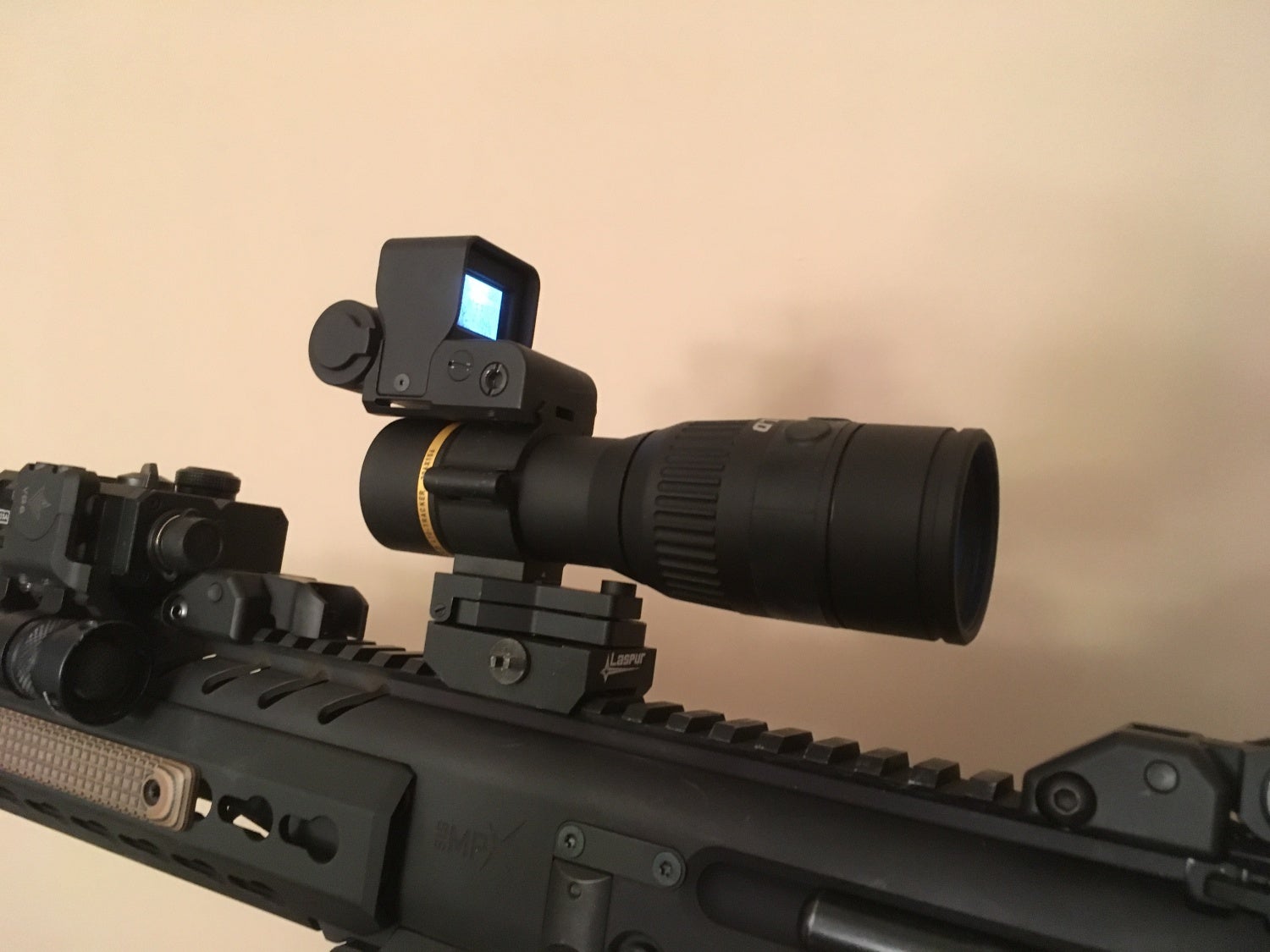
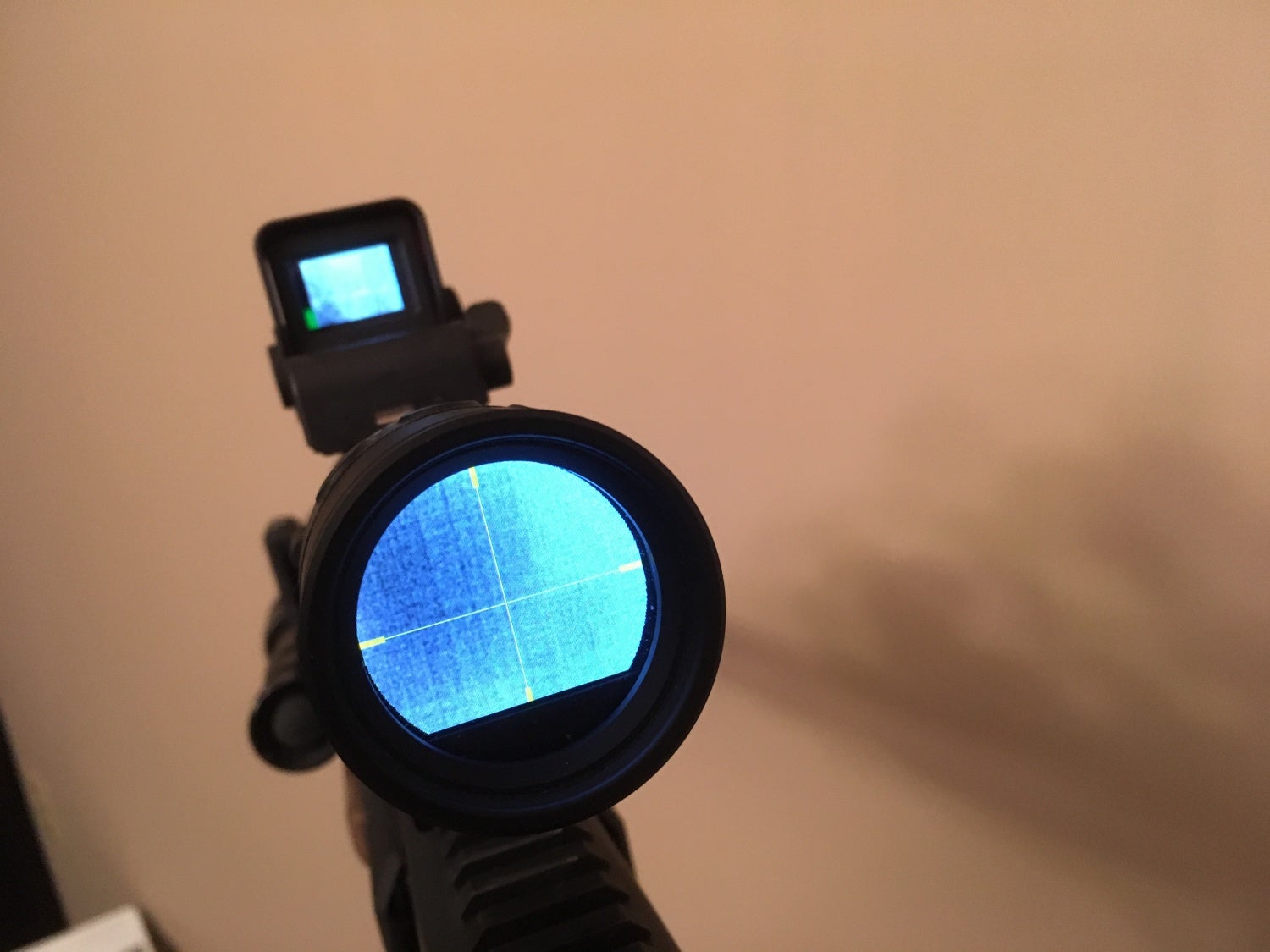
As you can see in the photo above, the LTO has a cross hair reticle. If you press the power button twice the reticle shows up. Repeat to remove the reticle. I am not sure why Leupold programed this in since it is not adjustable at all. Luckily the person I bought mine from solved this with an inexpensive mount from Amazon, most likely made in China.
The mount has windage and elevation adjustments. However it is simply thumb screws that deflects the entire upper portion. The mount is held in position with simple springs so while it does an ok job holding zero, it does not feel like a very secure mount. The scope ring hinges and is closed by a thumb screw. This allows the LTO to be installed or removed from the mount without the need for tools.
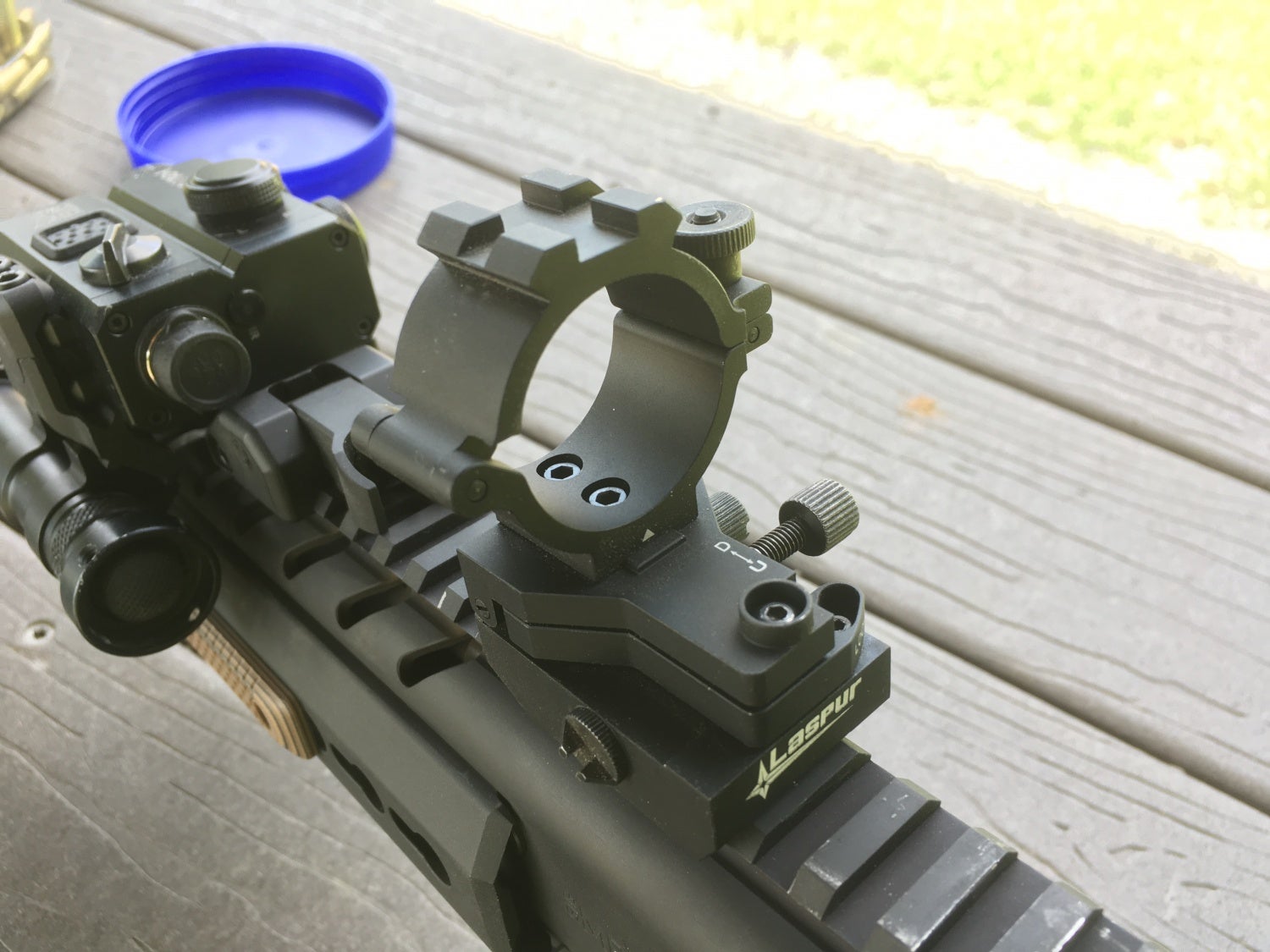
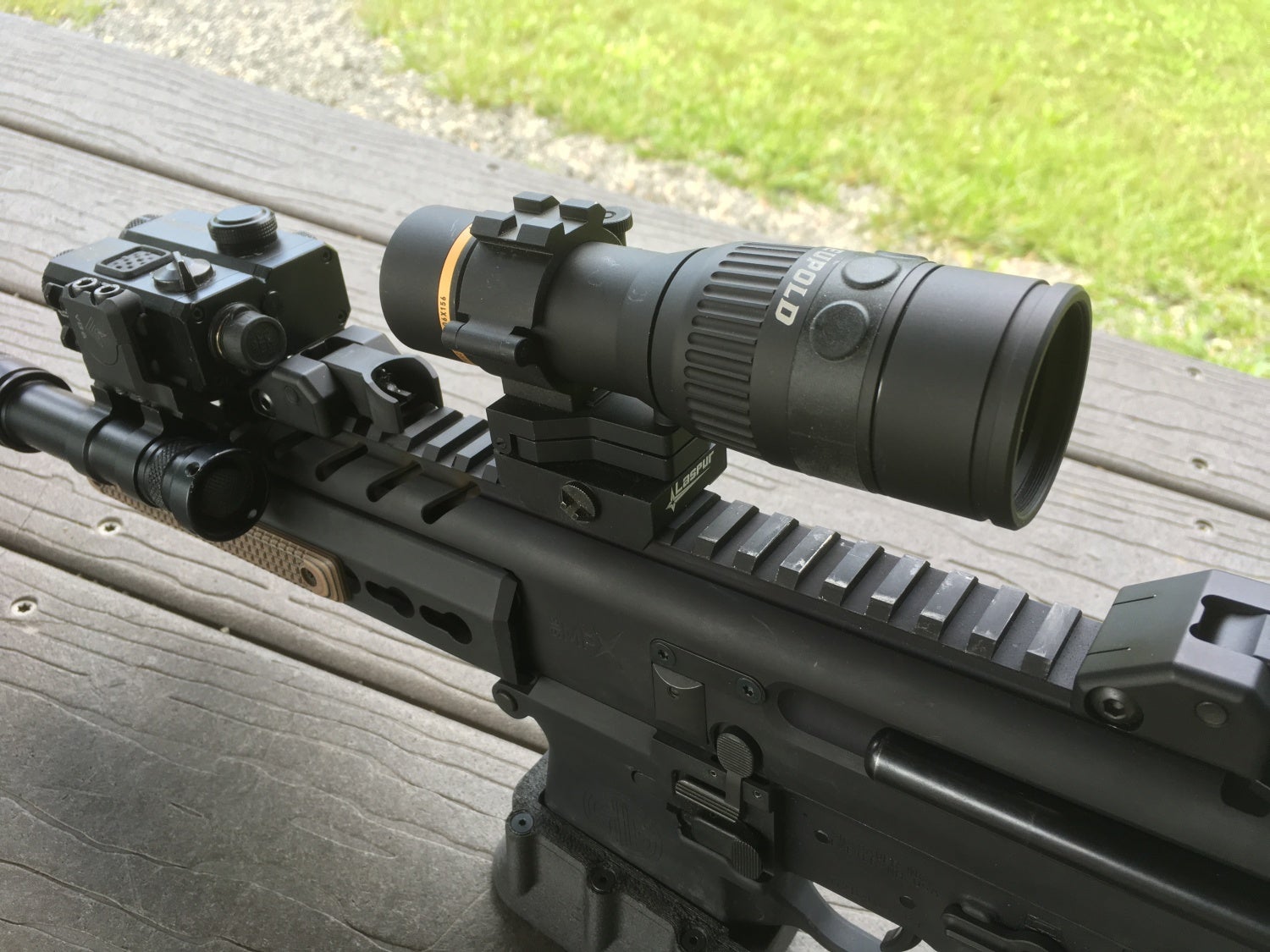
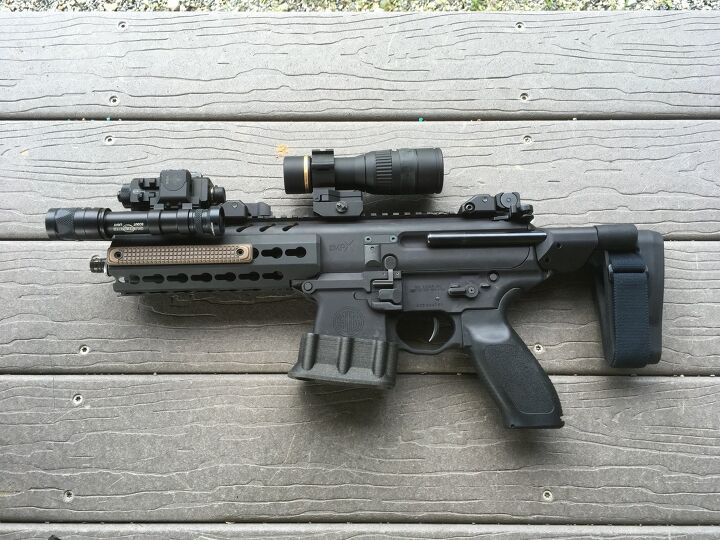
As I said the mount works for zeroing the LTO. Since the adjustments are simply a thumb screw, the increments are rather large and fine adjustment is a matter of trial and error. The bigger problem is using the LTO as an aiming device.
Leupold officially does not recommend the LTO to be mounted to a firearm as per their FAQ section.
It is not recommended to mount the LTO Tracker to any firearm or crossbow as it is not tested for this type of shock.
When I spoke to a Leupold representative at SHOT Show, they said it failed their recoil test. This test consisted of mounting it to a rifle chambered in .375 H&H.
So while it failed that test, I tested to see if it would handle softer recoil like a 9mm pistol caliber carbine and rimfire. It performed flawlessly. I did shoot an MCX pistol chambered in.300blk with the LTO but I did not try 5.56 or .308. When I test fired it, I shot exclusively suppressed with sub sonic rounds. I did shoot a box of 125gr super sonic .300blk ammo and have not noticed any issues with the LTO.
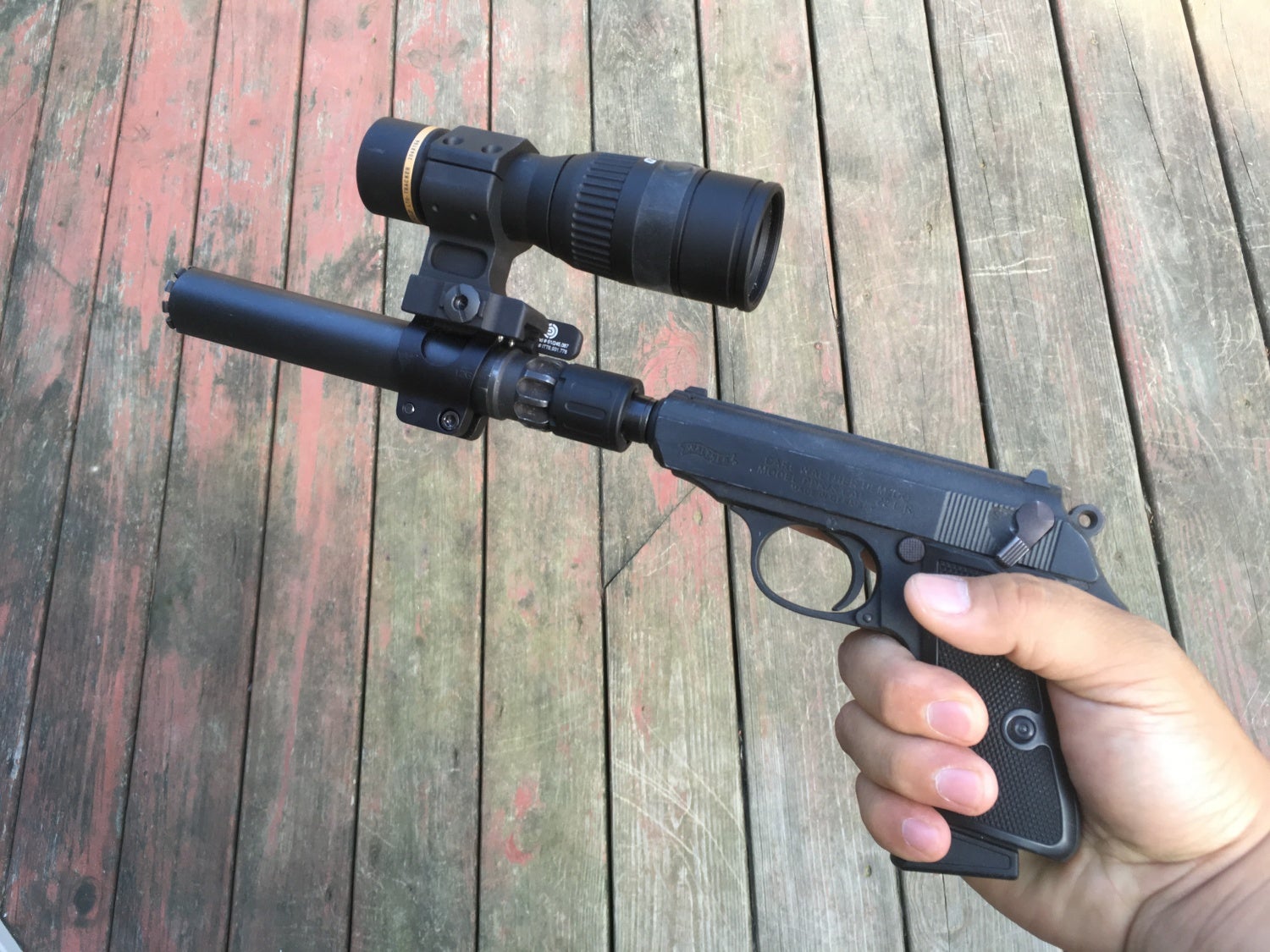
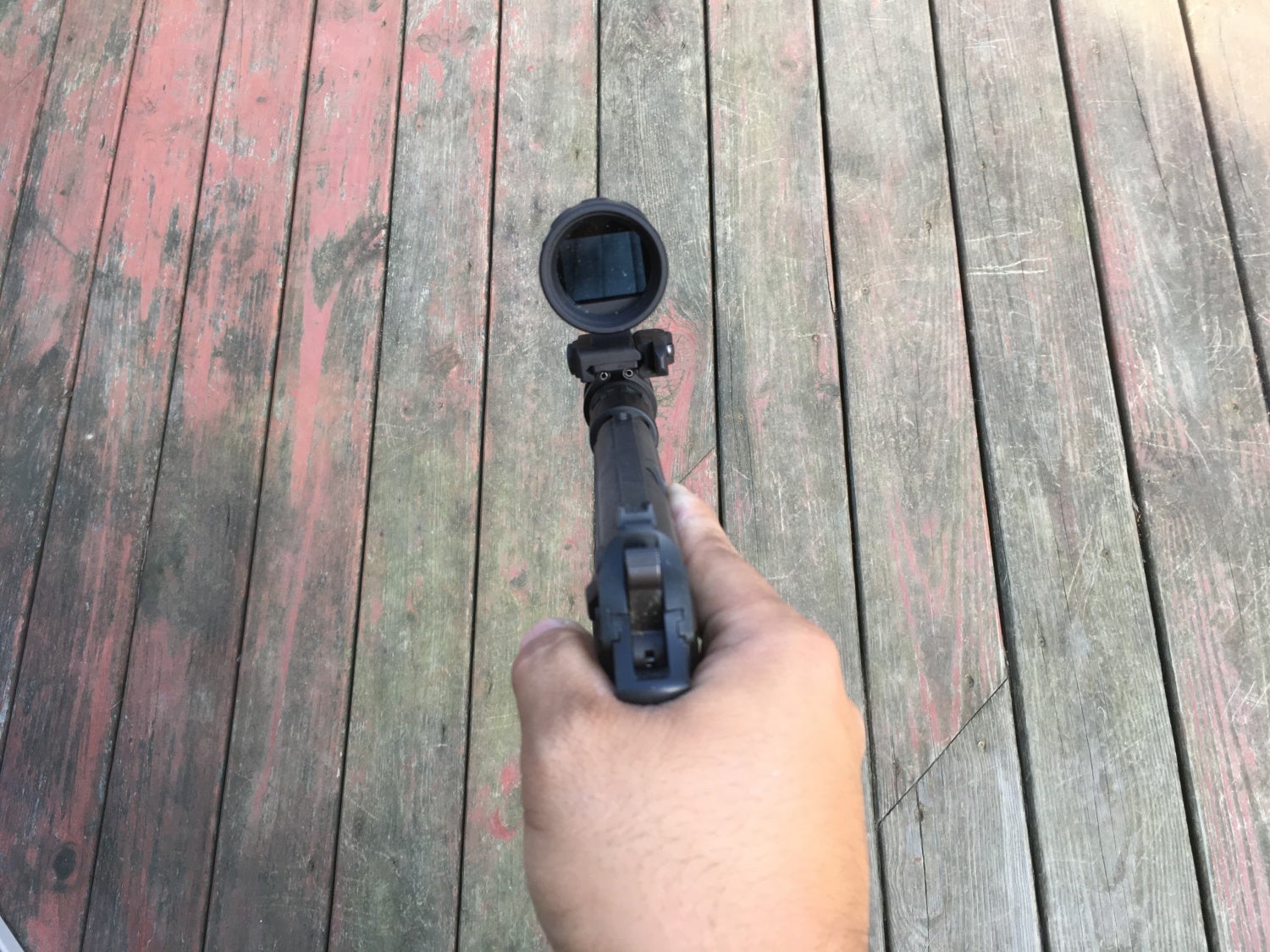
Since the screen is small and the resolution is only mediocre, it can be difficult to aim with the LTO. So another option is to pair it with a red dot.
You can mount the LTO in front of a red dot and use the red dot to aim however you will have an issue with parallax. The red dot will not suffer from parallax but the screen of the LTO does. If you look through a red dot while cowitnessing the LTO screen, the dot will be over the image. But as you shift your head just a tiny bit, it will look like the dot is moving. You can of course keep both eyes open so that your non-dominant eye can ghost the target but I found this sight picture to be a little too convoluted.
I took two photos to show this problem. See the bright red dot in the lower right of the screen of the LTO? That is a cowitnessed red dot. By moving my phone over slightly, the red dot seems to shift to the center.


The next best option is to mount the LTO offset to the side of your primary optic. I used a Midwest Industries 30mm optic mount to hold the LTO while I used an offset QD picatinny rail to cant it to the side.
With the setup below, I can aim with my right eye and then look at the LTO with my left eye to check for heat signatures.
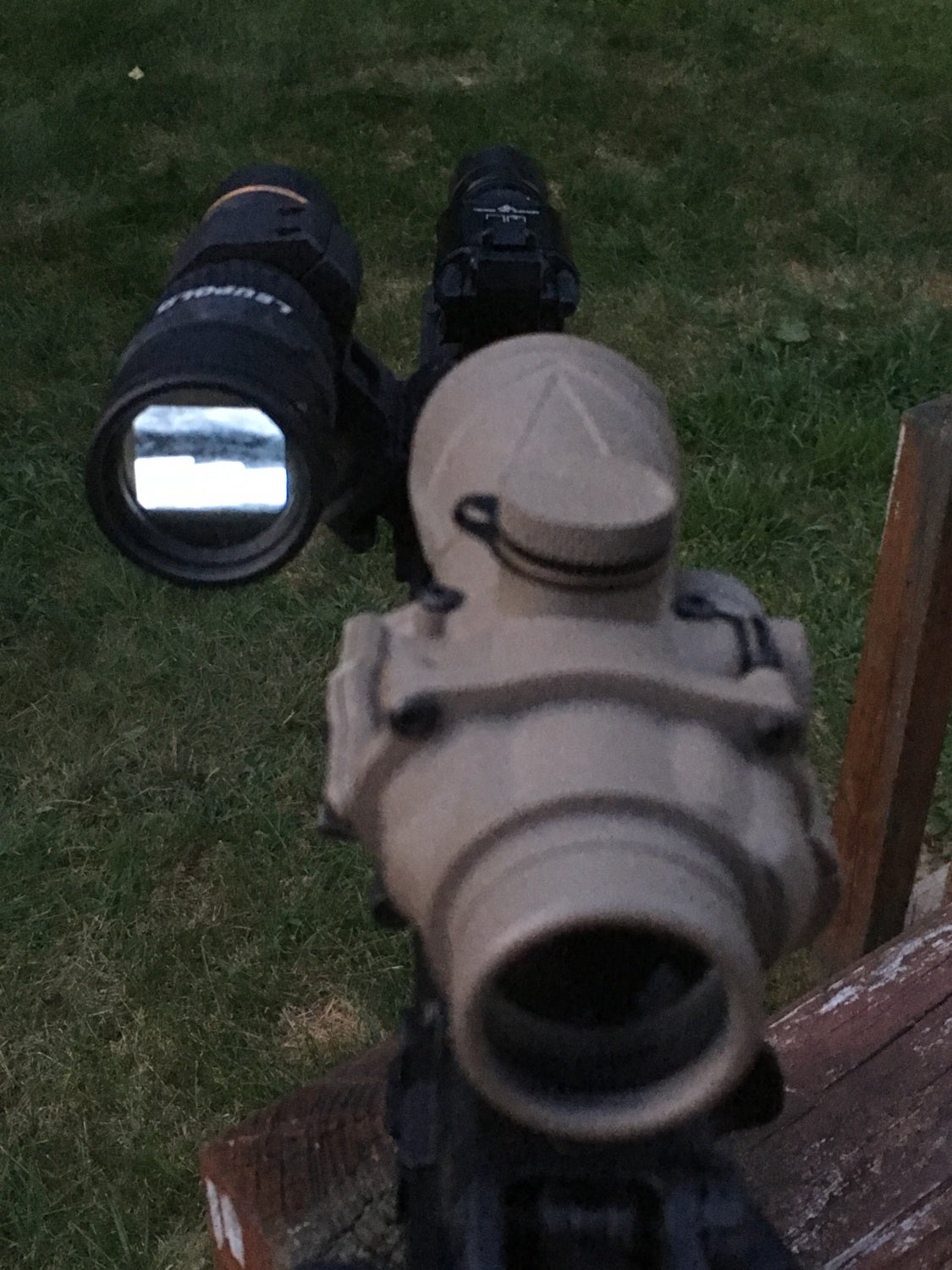
Depending on your scope and mount setup, you can have the LTO right next to the eyepiece of your scope making it very easy to check the LTO and aim at the same time.


So how well does it work at detecting heat?
Here is a comparison of the Torrey Pines and LTO.
I was able to see people across the street about 50 yards away with the LTO.
At closer distances it is much easier to see and hit targets. I froze a water bottle and shot it about 20 feet away.
There are some issues with the LTO. When you turn the LTO on it always defaults to 1.5x magnification. This fills the screen of the LTO but I prefer the wider field of view of the 1x. The problem is I have to cycle through 2x-6x before it goes back to 1x. Pressing the center button steps the magnification by one whole magnification. So 2x, 3x, 4x, 5x, and 6x. By holding the same button down, you enter into a finer magnification mode. holding the button or pressing it repeatedly will zoom in 0.1x increments. You have to push the right hand button (the color button) to zoom back out. Pressing the power button exits this finer magnification mode.

The LTO has six different color settings.
- White
- Black
- Hi-White
- Hi-Black
- Red
- Green












I did not find red or green to be helpful at all. The Hi-White/Hi-Black settings were great at first until I realized the threshold for the hot spots were not to my liking. In the photos above you can see how the brick retaining wall is the hottest object in the image so it glows red hot. I found that fur on my dogs masked a lot of their heat and do not show up as hot as the wall on some occasions. This was when I was only 10-20 feet away from the wall or my dog. If they were further away past 50 yards, then the image suffers due to a lack of resolution. They show up as a few white hot pixels and it is difficult to discern what you are actually looking at. Whether it is a hot rock, pile of dirt or an animal. The LTO also cannot see through such things like bushes or trees. It can of course see heat signatures in gaps between the leaves but that is not the same. If you are trying to spot game through dense brush, I do not think this will work as well as you would like.
Of course what do you expect for a $500 thermal scope? I am pleased with what it can do at 50 yards and closer. While the adjustable mount did help with zeroing the LTO as an aiming device, I feel that a red dot is a much more precise method of aiming at such distances. If you want to get your feet wet with an entry level thermal device then this may be something you should get.
 Your Privacy Choices
Your Privacy Choices
